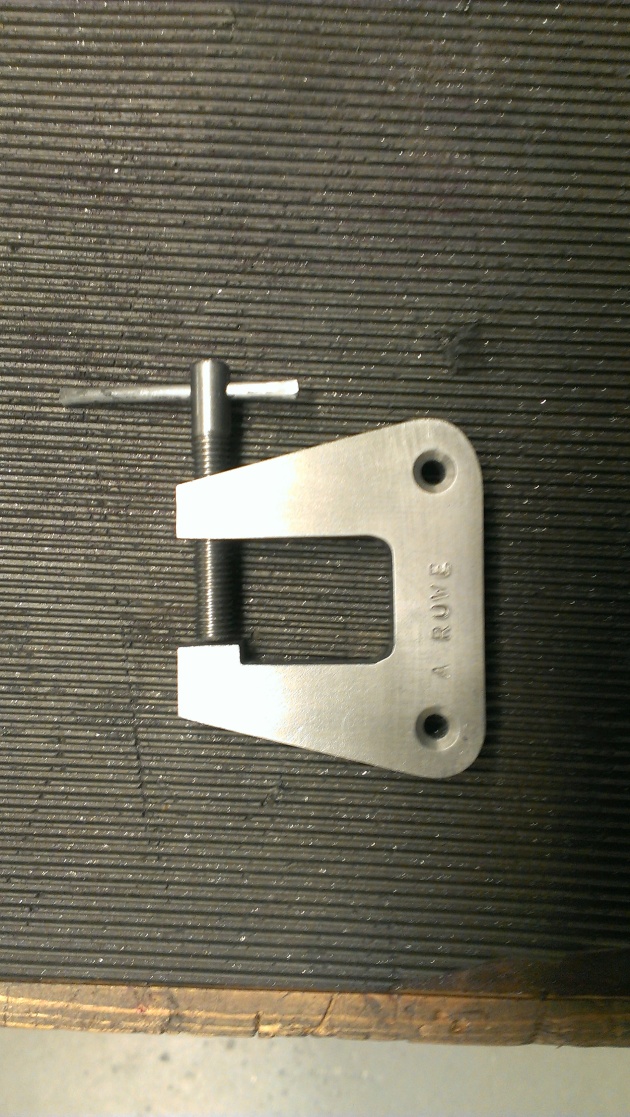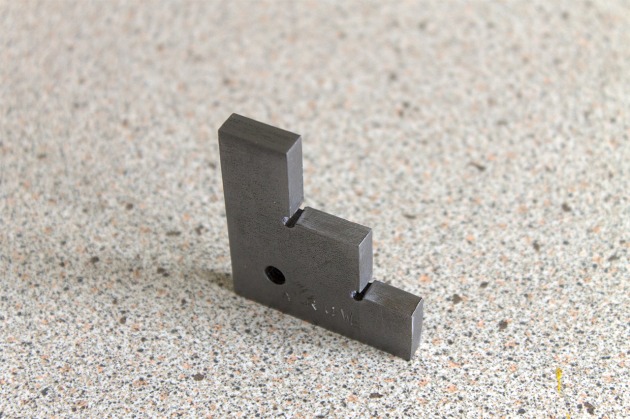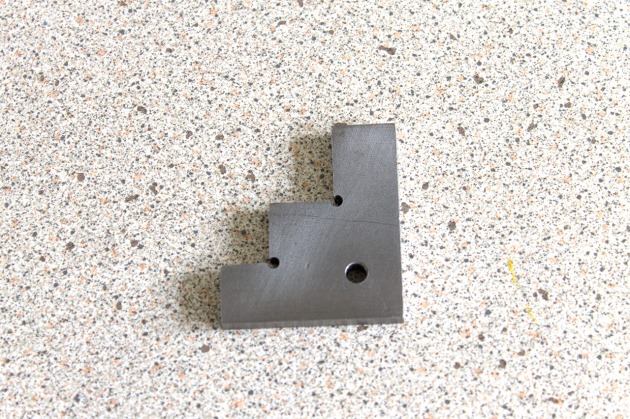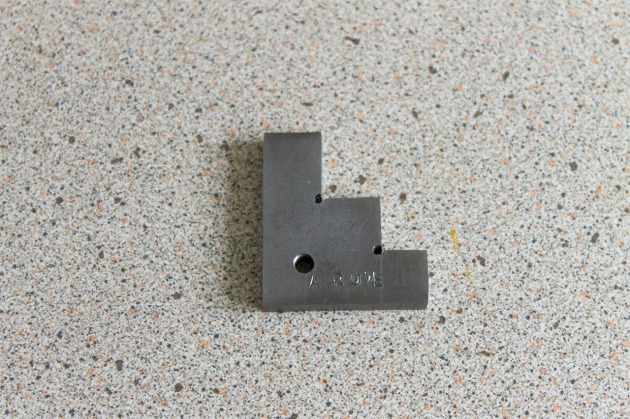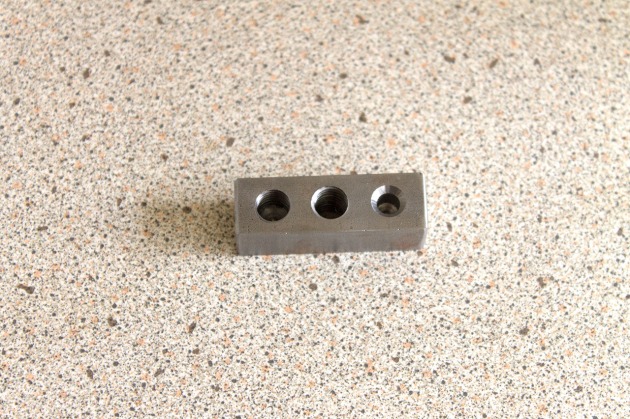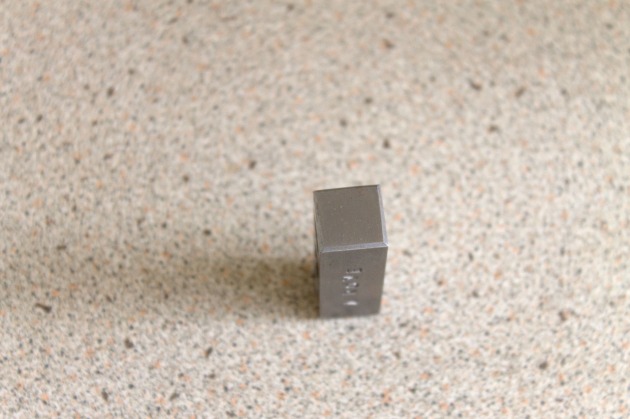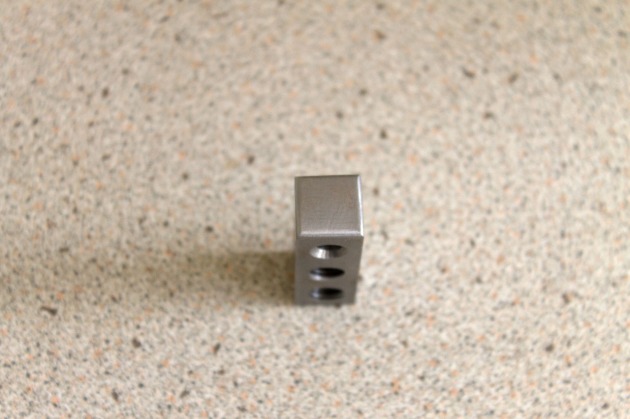After the first job was finished and I’d stopped grinning like a fool, I started in on the second job, which promised to have some actual real life applications.
The drills we use in the training workshop are great big pillar drills, which stand upright, taller than me (I’m six feet tall) and are operated by pulling a handle towards you, which lowers the drill chuck and hopefully the bit, towards whatever you are drilling holes in. The drill chuck itself is at one end of a tapered metal rod, which fits into a metal sleeve which doesn’t have a taper. Essentially, when you fit the chuck, you slide the rod into the sleeve and give it a good push. The taper on the rod is essentially the only thing holding the chuck onto the drill.
The drill drift is intended to help get the chuck out, by sliding into a socket aligned with the top of the tapered rod inside the sleeve. A healthy tap on the big end of the drill drift and the chuck falls into your hopefully prepared hand. That’s the theory anyway. It’s a tool. My first tool.
The plan we were given instructed us to hacksaw off a 160mm long section of 5 x 25mm mild steel from the material stock. Once we had that, we were to make each end flat and square, choose one end of the piece to act as our datum point, then follow the job plan to produce the tool.
It’s an odd thought, but before starting this, I would never have thought of a hacksaw as being a shortcut tool, but it really is. Especially when you are looking into the abyss of hand filing a fairly significant chunk of metal away, remembering that at the end, we have a tolerance of +/- 2.5 microns. Hacksaws seem a bit cheaty, really, but I’m glad we have them.
The end result had to be 151mm long, 22mm high and 5mm thick. One end was to be tapered to 2 3mm radii (giving us a half circle), the other to 2 12.5mm radii (again, a half circle). The big end has a 6mm hole drilled into the center point of the radius, and the hole is to be countersunk 3mm.
All edges, including the radii, had to have a 1.5mm chamfer applied. Again, this is all hand tools, the only machine used is the drill.
My first tool.
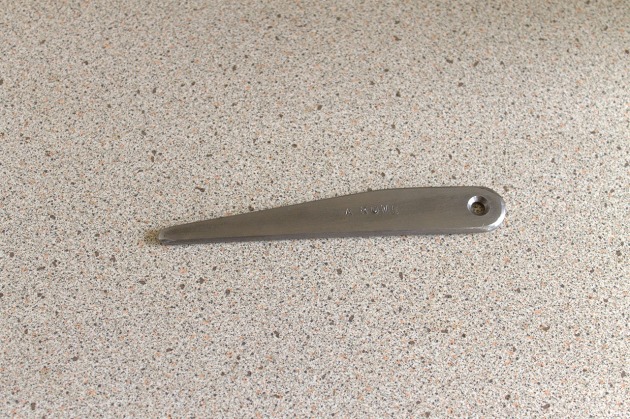
Job No. 2 – Drill Drift
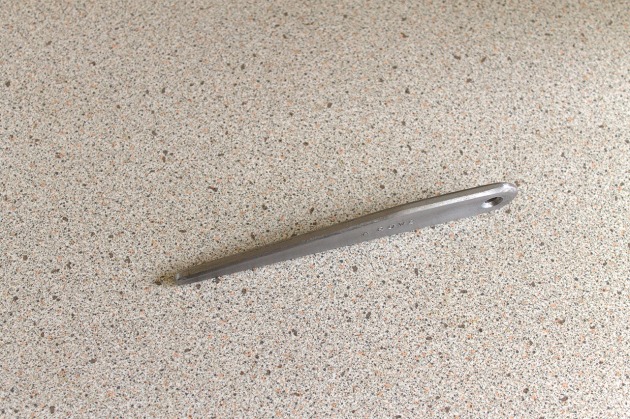
Drill Drift standing on edge
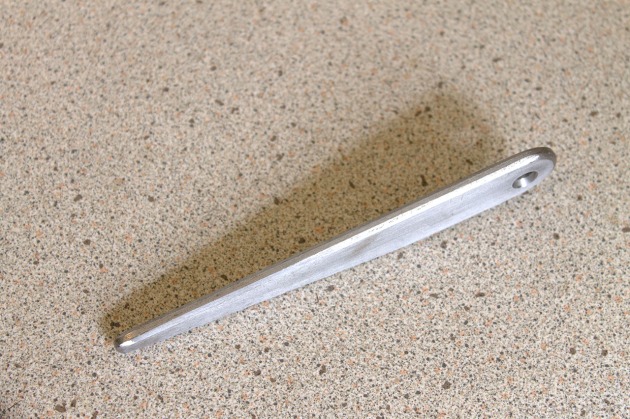
Drill drift standing on edge, showing my chamfers.
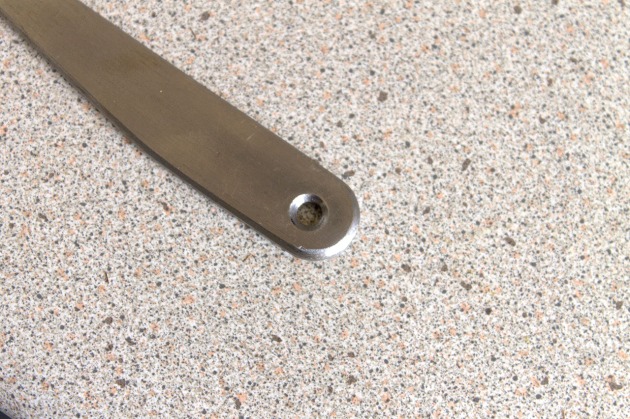
Job No. 2 botched countersink.
If you look carefully, you can see I buggered the countersink up. Also, I am about a millimeter out of center with the hole. Not much, but it’s interesting how obvious it is to the eye. There’s a lesson in that.
Fairly proud of how flat and square the edges are, as well as my chamfers. I still need a lot of practice, but hey, that’s the point of being an apprentice isn’t it? Chamfers on rounded ends are hard!
